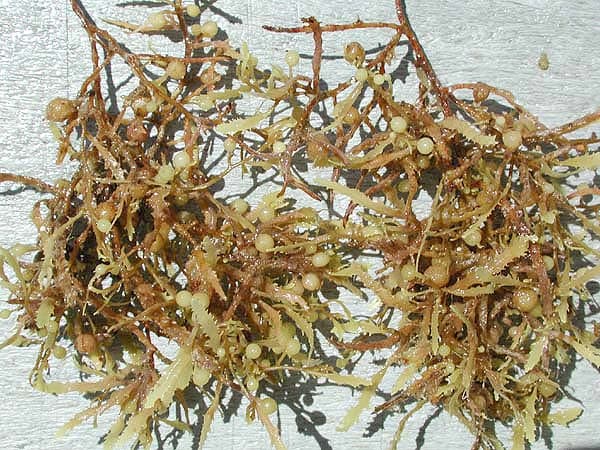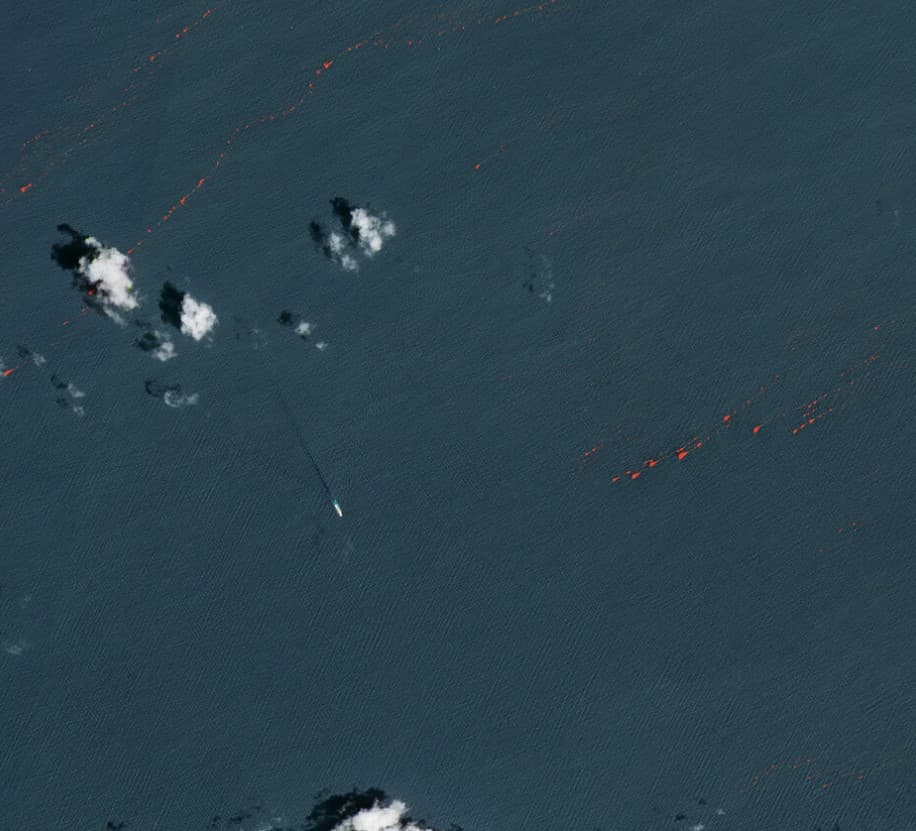ESA’s Sentinel-2 satellite is tracking what may be the largest bloom of Sargassum seaweed ever recorded as it drifts toward the US East Coast, threatening to dump millions of tons of rotting vegetation on thousands of miles of beaches.
Famed in history and folklore, the Sargasso Sea is what at first seems to be a legend, but turns out to be a solid fact. First recorded in the logs of Christopher Columbus, who sailed through it in 1492, it’s a huge calm patch in the middle of the Atlantic Ocean where the great sea currents flow around it, but not through. It’s located in the doldrums latitudes where the winds may not blow for weeks at a time, leaving behind thousands of square miles of unmoving deep-blue water of remarkable clarity.
But what makes the Sargasso Sea worthy of raising the hairs on the back of the neck is the Sargassum weed that grows there. It’s a form of rootless, leafy algae with grape-like bladders that keep it afloat. It turns the Sargasso Sea into a matted jungle where seahorses live and acts as the mating ground for the European and American eels, which was a mystery for thousands of years.

NOAA
This weed was also a fearsome sight for sailors. Columbus thought he’d be tangled in it or that it indicated shallow waters and reefs. Over the centuries, it developed a mythical reputation as a graveyard of ships where, supposedly, fleets of rotting hulls floated in the clutches of the weeds long after their stranded crews had died of hunger and thirst.
It also inspired many works of fiction, including a Doc Savage novel, the works of Dennis Wheatley and Ezra Pound, and even an episode of the Jonny Quest cartoon series.
Today, the Sargassum poses a more realistic problem. As part of ESA’s Earth Observation Science for Society initiative. Sentinel-2, 3, and 6 have been monitoring and tracking the latest Sargassum bloom recorded, which extends over 5,500 miles (8,800 km) from the shores of Africa to the Gulf of Mexico and is estimated to have a mass of 10 million tonnes.

ESA
So long as it remains in the deep ocean, the Sargassum isn’t much of a problem, but as it approaches the Florida Keys, the Yucatán Peninsula, and the eastern Caribbean, it could have a nasty impact. In shallow water, the Sargassum could reduce oxygen in the water to critical levels and disrupt fishing and the local ecology. Washing onto the beaches, it would soon rot in the tropical sun, emitting toxic hydrogen sulfide gas and the nauseating odor of rotten eggs.
The result could be economic damage in the millions, so ESA and other agencies are keeping a close eye on the giant mat’s drift. Since it will have to cross through the Gulf Stream, it could be pushed north, and exactly where it may end up is still uncertain. But one thing is certain – a lot of people will be investing in nets to keep it off beaches, and rakes, pitchforks and power equipment to clear it away if it makes landfall.
Source: ESA
Source of Article